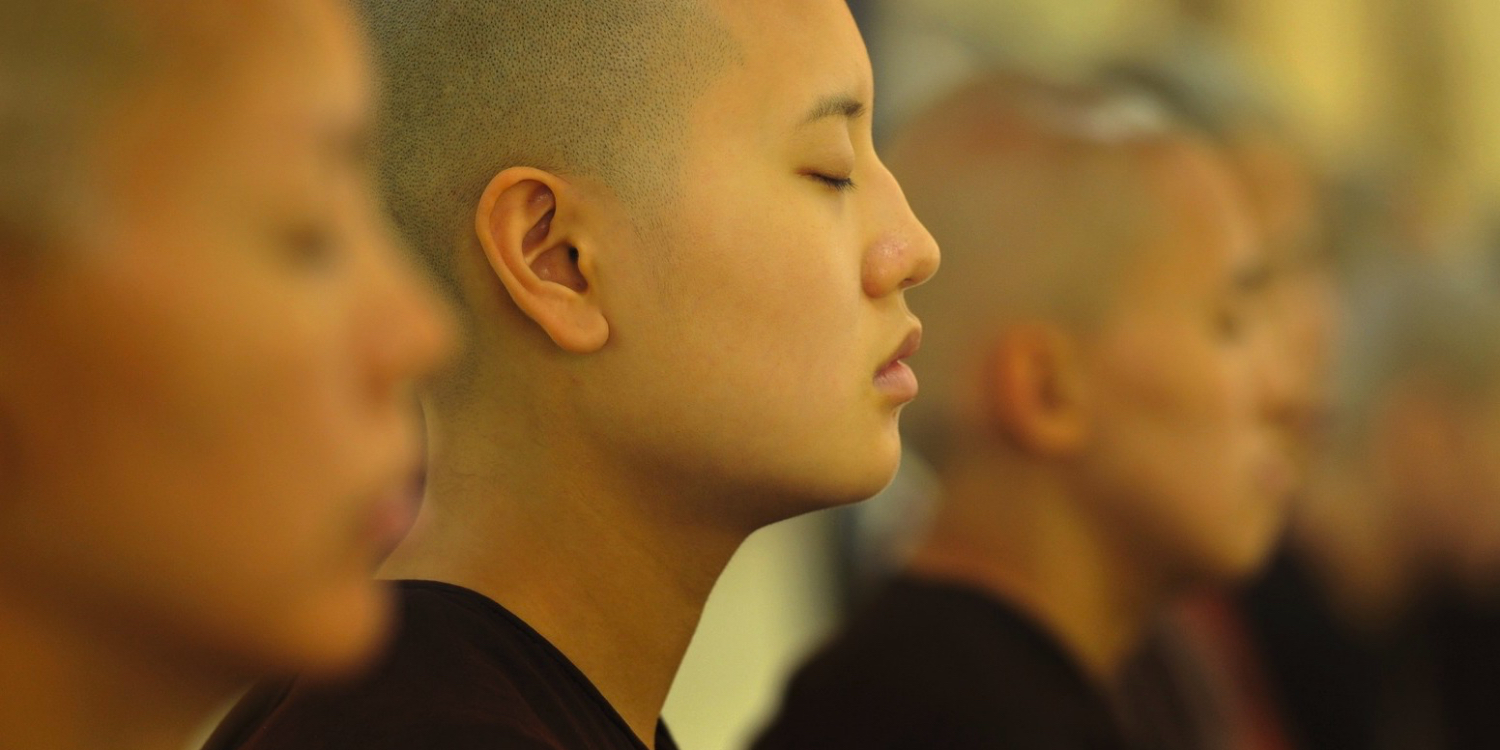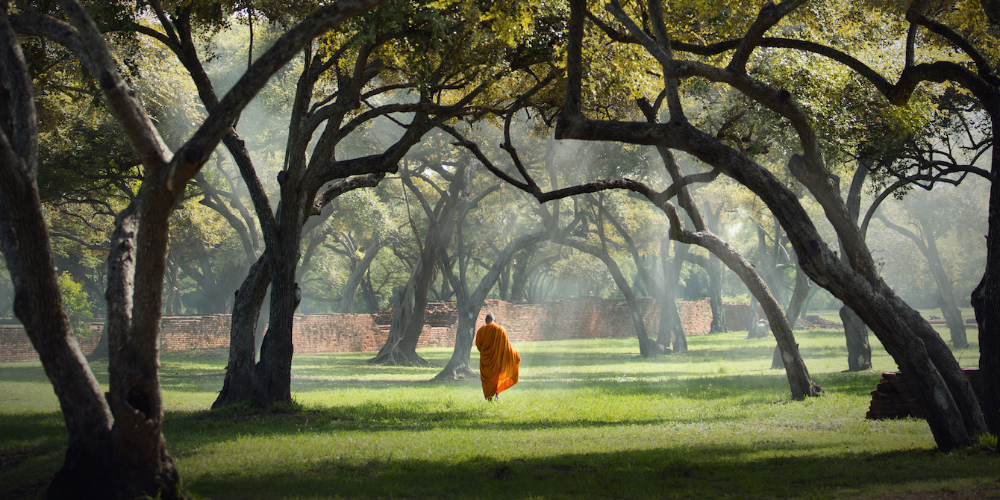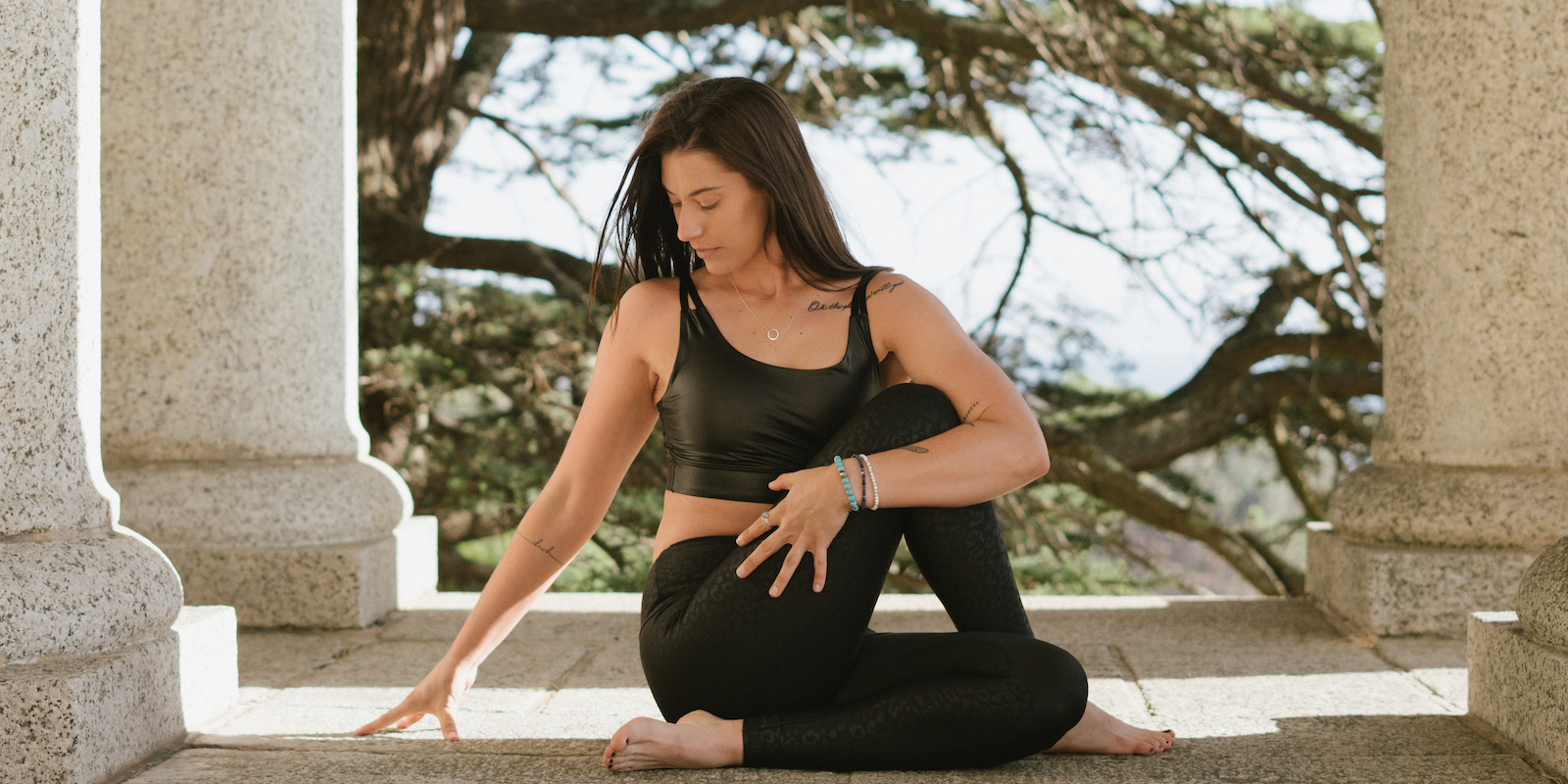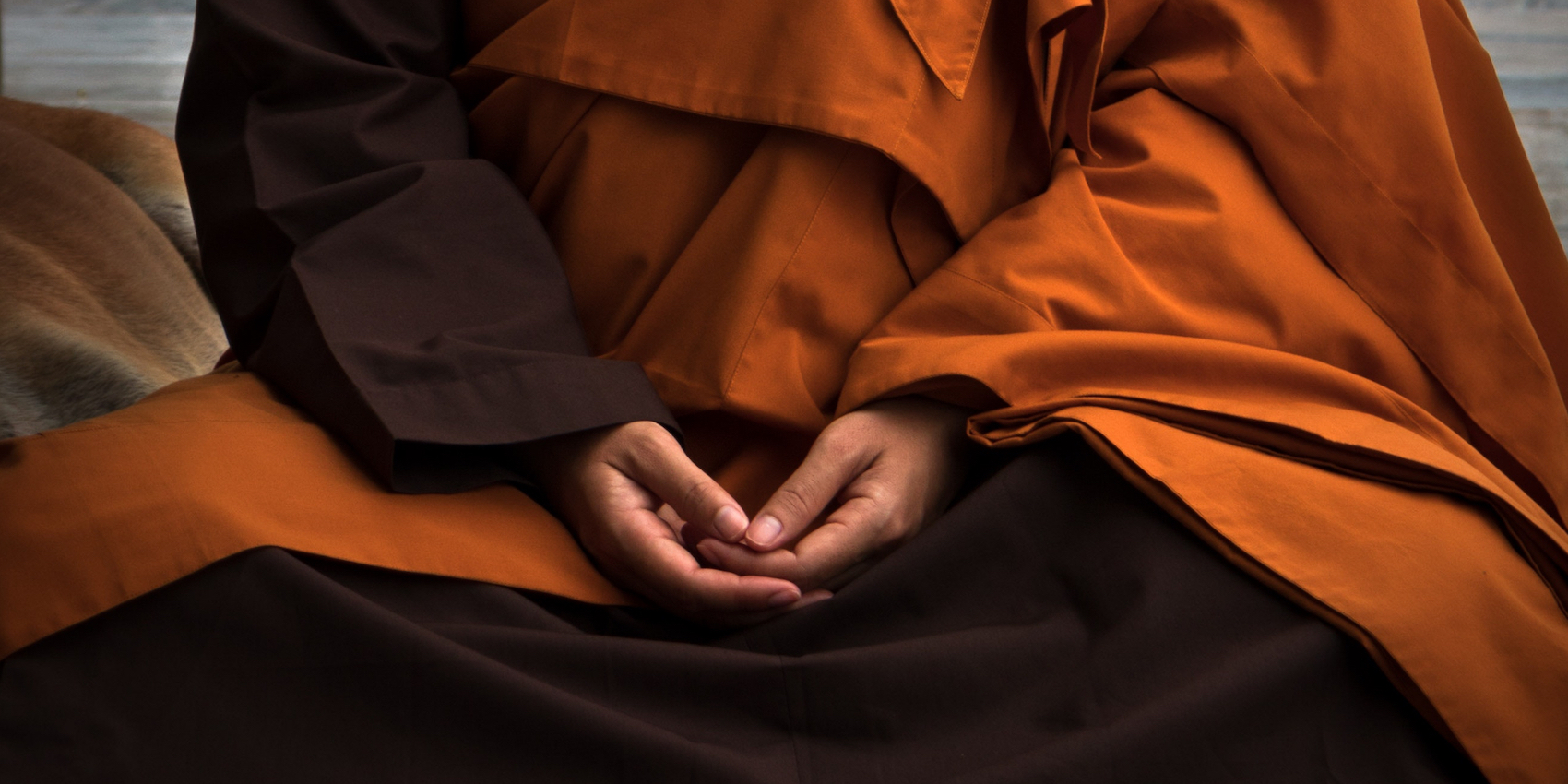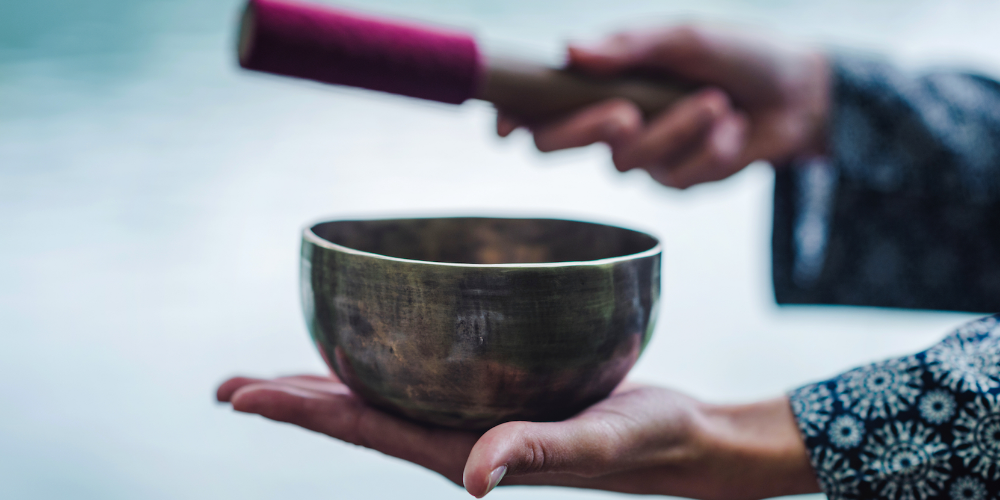This column addresses some of the meditation questions which practitioners with all levels of experience frequently ask when working with me. They say the answers help make practice easier. The answers, which draw on traditional Buddhist texts and practice instructions, also help them to practice more regularly with more experience of contentment.
Read more about the author at the end of this article. You can send responses and your meditation questions directly to Beth Adelson. Contact her at adelson@rutgers.edu.
8 Frequently Asked Meditation Questions
For your convenience, I will list the meditation questions here to give you an overview. Scroll down to any that interest you.
- I want to meditate, but I’m not very good at it. What can I do?
- How can a busy mind and a restless body be “helpful”?
- Why should I put my attention on my breath?
- How long should I practice? And how often?
- If we know we are right, why would we listen to our teachers who speak/write as if they aren’t as certain?”
- How can I express my beliefs?
- How can I use meditation as a refuge when times are difficult?
- What can I do to not make myself anxious?
It is helpful to use meditation as an experiment in becoming comfortable with your responses to life’s events. By building calm hearts and minds we become more comfortbale. We do this is by resting with whatever comes up. Eventually, we become very strong while remaining at ease.
After reading the following eight meditation questions, their answers and experimenting with the suggested practices, try the following experiment over the next week whenever you think of it:
- Whatever is your state of mind and body, whatever events come your way, attend to them as best you can
- In response, rest as best you can.
- See what happens.
Question 1
I want to meditate, but I’m not very good at it. My mind is busy and my body is restless.
A busy mind or a restless body can be very helpful in meditation. I’m glad when people ask about this, rather than just walking away. Meditation does bring concentration and contentment. One reason is that it has us work with our natural states which include restless minds and bodies. So, confusion and restlessness are not problems, rather they are the ground for practice. We work with these naturally arising states until we can be at ease with their presence.
Practice Experiment:
- Close your eyes, sit comfortably and put your attention on your breath. If your breath is not comfortable just use any other sensation that’s easier to be with, feet, hand, seat — your choice.
- Let all your thoughts and body sensations come to you. Let any feeling of restlessness come to you.
- Give yourself permission to notice and allow this.
- Now, just feel the energy, not the content of your experience. To do this, notice the content, then turn your attention away from the specifics and onto the accompanying physical sensations.
- Let all the energy of the experience come to you. Let yourself rest as you feel the energy.
- When you are ready, open your eyes and let yourself take in your experience. Repeat this as you find useful.
To continue to see how to rest with a busy mind and a restless body, look at the next question.
Discover Insight Timer’s free “Learn to meditate in 7 days” course that introduces and guides you through some basics of meditation.
Question 2
How can a busy mind and a restless body be “helpful”? I still don’t get it.
I can understand why this isn’t quickly intuitive. We see statues and paintings of enlightened beings sitting in calm repose; we may have heard that to meditate we have to clear our mind of thoughts. Often students come to me feeling that it would be a good thing to be able to count ten breaths, to “hold their thoughts at bay”. That’s not only hard but thankfully unnecessary. If you are curious about the possibility that your mind and body, as they are, might be helpful, rather than an obstacle try the following experiments.
Practice Experiment 1:
- Close your eyes, sit comfortably and put your attention on your breath.
- Let all these background beliefs from what you have seen and heard come to you; let your thoughts and your body sensations come to you.
- Now, for just a moment, allow all these strong experiences to be suggestions, rather than calls to action.
- Let resting be the action you are choosing. Don’t hold yourself here any longer than you want to. When you are ready, open your eyes and let yourself take in your experience. Repeat this as you find useful.
Practice Experiment 2:
- Close your eyes, sit comfortably and put your attention on your breath. Let all these background beliefs from what you have seen and heard come to you; let your thoughts & your body sensations come to you.
- Now, just feel the energy, not the content. Let all the energy of the experience come to you.
- Let yourself rest as you feel the energy.
- When you are ready, open your eyes and let yourself take in your experience. Repeat this as you find useful.
Question 3
Why did you suggest putting my attention on my breath?
Meditation practice is designed to help us feel less confused; and to ease anger, fear and difficult longings. If we start by attending to our breath, we are attending to a first-hand experience which is simple, comfortable and easily accessible. People find this focus of attention results in feeling more ease.
Learning to rest while we pay attention to properties of the breath is a step toward learning to rest as we live our lives. Over time, we learn to rest as the experiences which we both did wish for and did not wish for, but can’t change, present themselves.
You can rest your attention on your breath if that’s comfortable, but any simple, pleasant, first-hand experience will do. Just below we look at other places to rest the attention.
When we meditate, we practice resting while paying attention to what is going on. And this really is practice, so there are a few things that are true here, as with any practice:
- It’s a good idea to set yourself up for success so that you get the experience you are looking for, and you feel encouraged. Here it means you can pick something easy and restful to attend to. This is like starting with the right weight at the gym so that you want to come back the next day.
- Practice takes time but what you practice becomes a habit. This lets you off the hook. -Just breathe, attend, and rest. Your attention will get stronger and your rest will get deeper; that’s the nature of the practice. If you are having a hard time, attend to something else that is prominent and pleasant.
Practice Experiment 1:
- Close your eyes, sit comfortably and put your attention on your breath.
- Whatever comes up see if you can greet it with a feeling of rest.
- Open your eyes when you are ready.
- Now notice if the feeling of rest has eased any feelings of fear, worry or anger.
It’s an experiment; any result is fine. Contentment will come in its own time.
Practice Experiment 2:
This is especially helpful if your breath is not comfortable.
- Close your eyes, sit comfortably and briefly put your attention on your breath. Notice and allow your experience.
- When you are ready, choose to move your attention to your feet. Notice and allow your experience.
- When you are ready, choose to move your attention to your hands. Notice and allow your experience.
- Now choose to move your attention to your seat. Notice and allow your experience.
- See if you can greet each experience with a feeling of rest.
- Open your eyes when you are ready. Then notice if the feeling of rest has eased any feelings of fear, worry or anger.
It’s an experiment; any result is fine. Contentment will come in its own time.
Practice Experiment 3:
- Close your eyes, sit comfortably and put your attention on your choice of “object”, breath or hands or feet or seat — your choice. Focus on whatever is prominent and comfortable.
- When your attention is on your object, gently notice if it’s changing in any way. The breath comes in and goes out. Temperature and texture change.
- When you are ready, open your eyes. Take in any changes you noticed while resting.
- Repeat this activity of noticing change or “impermanence” as often as like.
- See if you start to take in the changing nature of your object as you rest your attention on it. Eventually, this helps us rest in the cascade of life.
Again, it’s an experiment; any result is fine. Contentment will come in its own time.
Question 4
How long should I practice? And how often?
Practice for the length of time which is comfortable right now. Practice as often as is comfortable right now. Eventually, when you can practice for between 20 and 24 minutes, changes will start to set in and last. This is because there are underlying physical changes which start to occur in your body if you do an activity for 20 to 24 minutes.
When you practice for a shorter doable time you are accomplishing something equally important; you are making longer times both possible and pleasant. As you gradually come to practice every day it will also help you feel the changes.
Here are some principles for the length of your practice:
- There is no need to hurry. Start with an amount of time and a frequency which is comfortably doable. When that is pretty reliably comfortable, increase it by an amount, small enough to remain comfortable. Then stay with this amount until it is consistently comfortable. Some days will be easier than others; that’s ok.
- See any increase in time or frequency as an experiment, not as a goal. Work this way for several reasons: You want to build a practice which you look forward to. You want to be a kind and, therefore, an attractive teacher. Conversely, powering through by quickly increasing your time, or sitting more frequently but with less ease isn’t helpful. Eventually, it can keep you from practicing. Also, pushing is contrary to what you are trying to establish, a sensibility of ease, not of stress.
- One thing that helps us build a daily practice is remaining open to the possibility of change. See if you can notice what you currently feel is the realistic duration and frequency of your practice. Then, see if you can consider that this is both true now and that it could change.
- Every time you practice, for however long, noticing what you feel and resting as best you can become increasingly strong habits. It’s mutually exclusive to distraction, fear, worry, and anger; it replaces them.
Read more: Explore the best time to meditate for you that doesn’t feel forced.
Practice experiment:
- Create a place where it is easy to sit. For example, move a favorite chair to a place you like.
- Choose a time to sit and amount of minutes for each sit.
- When you are done sitting take in the possibility that the length and frequency might change. No need to hurry, just consider the possibility.
For this practice, you can use the most popular and free meditation timer.
Question 5
One of my students sent me this question. I like the light-hearted way he phrased it as well as the central and direct point he adds at the end:
Since my way of meditating is the best way, why doesn’t everyone who meditates do it my way? Put that way, the opinion is clearly silly. … [But] the bigger question remains: If we know we are right, why would we listen to our teachers who speak/write as if they aren’t as certain?”
There are two things that are useful to look at here.
Firstly, one’s own certainty and doubt. The Dalai Lama has a very nice teaching on how to decide what you do and don’t believe. He gives four criteria which I find helpful both as a meditator and as a scientist:
- Is the statement based on data that is likely to be true? That is, was it collected in an unbiased and careful way?
- Is the person making the statement generally careful and truthful?
- Do others you respect believe the statement?
- Does the statement match your first-hand experience?
This last is central in Buddhism and it’s one of the reasons I stick with it. The statement implies:
- We are respected; we are treated as honest and reliable.
- Firsthand experience is considered to be a useful guide. It’s direct, simple, and is not fabricated.
The second thing that is useful to look at is the way the teachers tend to frame things. It stems from the above; Buddhist practices lead us toward accurate perception of reality.
When we hear our teachers say things like “the teachings point to”, or “this is my current thinking” they are looking at the world in a way that matches this world view. They are remaining open to seeing things more and more clearly overtime. They are trying to take their opinions, judgements, etc. as hypotheses to be tested. This develops a habit of calm investigation. It’s a useful way of seeing and it feels good.
In the two short meditations below we will separate what we perceive from what action we then take. Practicing this develops a couple of things: The skill of more accurately understanding our perceptions. It also gives us greater freedom in responding, because we see more alternatives and can chose among them with more patience & insight.
We will use the above examples of certainty and doubt to better understand those experiences while developing these skills of insight and patience.
Practice Experiment 1
Certainty
- Recall a meditation class where you had the experience of being certain while the teacher, suggesting a different approach, used language that did not feel certain:
- Settle in. When you are ready, recall your feeling of certainty about what you knew.
- Let yourself notice and allow the feeling
- Feel it’s imperative
- Don’t act on it; calm your breathing
- Feel it’s imperative
- When you have a clear sense of the feeling and also feel calm, let the feeling be there, but also let it change.
- Open your eyes and continue.
Practice Experiment 2
Doubt
- Again, recall a meditation class where you had the experience of being certain while the teacher, suggesting a different approach, used language that did not sound as certain:
- Settle in. When you are ready, recall your feeling of doubt in response to the teacher.
- Let yourself notice and allow the feeling
- Feel it’s imperative
- Don’t act on it; calm your breathing
- Feel it’s imperative
- When you have a clear sense of the feeling and also feel calm, let the feeling be there, but also let it change.
- Open your eyes & continue.
Question 6
When thinking about what to believe the question of how to express beliefs comes up. In traditional writings this is called the question of “Right Speech”, although I think of it as “helpful speech”, because ‘helpful’ doesn’t put me in the position of worrying about being right or wrong.
The criteria for this “right speech” are the following: Is what I am thinking of saying
- accurate
- timely
- helpful
- kindly put
When I remember to sift my thoughts through these four filters I feel much better. Here’s an example in which there are several choices and the above criteria really help.
Last week I was at a talk given by a friend and fellow dharma teacher. The couple sitting across the aisle from me was holding a loud and lengthy conversation. Twenty minutes in, the husband of the couple started to repeatedly call out that he wanted his money back (the talk was free). So, what does right speech suggest? Here are three possibilities:
- Do nothing.
- Quietly ask the couple if they want to leave since it seems the speaker’s best effort isn’t pleasing them.
- Wait, calm your breath and feel your response to the couple and to the above two possibilities. See what comes to you.
We can use each possibility as a short meditation or contemplation.
See if you can remember a situation where you felt something did need to be said but there was a possibility that it would escalate rather than calm things.
Contemplation 1
- Sit comfortably with your eyes closed.
- Imagine doing nothing.
- See how you feel. Notice your breath, your body, heart and mind.
- However you feel, greet the feelings with gentle warmth. Take your time, let your feelings and reaction take their course.
- When you are ready, open your eyes. Take in how you feel and greet this with warmth.
The point is not to find one right answer but rather to build patience, calm and insight.
Contemplation 2
- Sit comfortably with your eyes closed.
- Imagine quietly and politely asking the couple if they want to leave since it seems the speaker’s best effort isn’t pleasing them.
- See how you feel. Notice your breath, your body, heart and mind.
- However you feel, greet the feeling with gentle warmth. Take your time, let your feelings & reaction take their course
- When you are ready, open your eyes. Take in how you feel and greet this with warmth.
Again, the point is not to find one right answer but rather to build patience, calm & insight.
Contemplation 3
- Sit comfortably with your eyes closed.
- Imagine calming your breath and feeling your response to the couple.
- When you are feeling more calm, see what course of action, if any, comes to you.
- Take in how you feel. Just let the experience percolate.
Over the next week, see if any of these practices and experiences come to mind as you are wondering what you want to believe, say or do. Just see how they feel. Try them out. Greet whatever happens with warmth. Notice the effect on how you see yourself, the situations and the others involved.
Question 7
Students have told me that they find it easy to meditate when things are going well, but quite difficult when things are not. Knowing that times of difficulty are times when sitting would be really helpful, here is a way to use meditation as a refuge. Just below I will give instructions for finding comfort and ease. But start by reading this poem by Ajahn Chah, the esteemed Thai Forest monk.
“Try to let things take their natural course.
Then your mind will become still in any surroundings like a clear forest pool.
All kinds of wonderful, rare animals will come to drink at the pool, and you will clearly see the nature of all things.
You will see many strange and wonderful things come and go, but you will be still.
This is the happiness of the Buddha”
The heart of what Ajahn Chah is saying is when we meditate we become able to see the strange and wonderful things which are always here. But first we need to find a way to be comfortable enough to do this. The instructions for this are below.
Meditation
- Sit in a way which is comfortable and alert.
- Start by putting your attention on your feet, see what is here today. Notice all the sensations which are coming to you now.
- Let yourself really feel into all these wonderful & varied sensations. Take your time doing this, let things change.
- If a thought, emotion or expectation arises, notice it. Let yourself feel it, allow what happens.
- Then choose to gently move your attention back to your feet. Let your attention and interest bring energy and wonder
Repeating this process:
- Work all the way up: from your feet, to your ribcage, your heart center, the front of your throat. All the way up to the sensations of your face.
- What was the most comfortable spot? The spot which gave you a refuge? Rest your attention there, let this experience become familiar, let the resulting state of peace and ease become familiar.
Taking in what you felt, see if this meditation was useful in sitting during a difficult time. Become familiar with any feelings of ease and interest. See if the memory of this ease can, going forward, draw you back to meditation.
You don’t have to meditate for a long time – just enough to steady yourself and feel better. You can go through as many or as few body parts as is useful. You can do this to find refuge on your cushion at a scheduled time, but you can also do it wherever you need a moment of refuge.
What to take away from this: Let yourself regard your practice as a source of ease. Let it be a moment of refuge. It’s not meant to be a chore; something which you do in the spirit of relentless and aggressive self-improvement. Rather let it be something appealing, which draws you to it with its relief.
Question 8
Evelyn, a long time student of mine, recently said
“I often make myself so anxious; it makes me feel worse. And I have been doing this for such a long time. What can I do?”
The way this question was framed contained the seed of the answer. Evie had seen that her response to her quite legitimate worries, as well as the worries themselves were things she could address. Importantly, she also saw that she had a choice, she could choose a practice path that would make her happy even in the context of real difficulties. This is one of the very powerful results of sticking to meditation; we learn that happiness is a choice which we can make.
Often it is the case, we find ourselves in situations which we did not create, we in no way wished for, but are nevertheless true. Figuring out what to do, starts with parsing the situation into some simple components; then seeing what the teachings and practices suggest.
As soon as Evie saw that what could be eased were both her response and the external issue, things became less confusing. There were two things that called for two different responses. Below we look at each, one at a time.
1. Easing Anxiety
Meditation provides a few powerful tools for noticing & dealing with anxiety. Let’s start with noticing it.
Meditation on noticing & easing anxiety
- Sit comfortably, alert and relaxed.
- Let a comfortable breath come to you.
- As your breath becomes clear and relaxed, notice what your breath feels like. Let this comfortable breath become familiar.
- Now notice what effect this comfortable breath has on your body, heart and mind. Let your attention rest on this for a bit. Let this comfortable and peaceful state become familiar.
- Now move your attention to something slightly worrying. Not too big a problem, but something that is familiar and bothersome.
- Notice what your breath feels like. Just briefly let this breath become familiar.
- Now notice what effect this worry has on your body, heart and mind. Let this state of body, heart and mind become familiar.
- Now recall the feeling and effect of your comfortable breath. Let this memory draw your attention back to this comfortable breath. Take your time and let it become clear. Notice its effect on your body, heart and mind.
- From this more comfortable place, send yourself the wish for peace and happiness.
This is very powerful: You are not denying or admonishing, you are making friends with yourself. Take your time and feel the effect of this kind wish. Let the resulting state become familiar.
This becomes a new habit: Feeling some well-being in the face of difficulty. What if you are deep into worry when you remember to do this?
It works whenever you do it. Each time you do it you will start to notice worry more quickly and move to comfort more easily. You will also start to notice your habitual mind-embroidery patterns and address them more quickly.
Remember: You are not being asked to deny or admonish, you are making friends with yourself. This kindness replaces worry with ease. In this way, you are creating an easy to recall response for difficult times.
This is the same take away as we had for the question above on becoming able to sit in difficult times. Let yourself regard your practice as a source of ease. Let it be a moment of refuge. It’s not meant to be chore; something which you do in the spirit of relentless and aggressive self-improvement. Rather let it be something appealing, which draws you to it with its relief.
2. Wise decision-making
Meditation also provides some powerful tools for wise decision-making in difficult situations:
Meditation on wise decision-making
- Again sit comfortably, alert and relaxed. Think of some conversation you are planning which seems difficult but not overwhelming.
- The first thing to do is to start from a place of calm. Find your comfortable breath and feel its effect on your mind. From this place of calm consider each of the following guidelines. See how they apply to what you might say & do or what you might hold off on.
- Accuracy: Sit comfortably and let yourself feel into this. Is what you are thinking accurate? Is it based on information from a trusted source? Does it go along with what you have seen from having paid attention to what is present? Does it coincide with what others you respect feel is ok? Check your breath, let it calm and see what you feel now.
- Timing: Sit comfortably and let yourself feel into this. Is this the right time for the discussion? Will it be helpful? Is it likely to improve the situation or just increase the existing frustration and discord? Is it better to wait until you see an opening? Check your breath, let it calm and see what you feel now.
- Accord & Inclusivity: Sit comfortably and let yourself feel into this. Is what you might say kindly and most simply put? Is what you might say meant to be inclusive rather than divisive? If the conversation is difficult, or if the other person is doing something you strongly and legitimately disapprove of notice that the most useful thing is to have the conversation from a more peaceful state. That is the most likely way to get the result you want. That is the most likely way to break a chain of hurtful actions. Check your breath, let it calm and see what you feel now.
These three features of a wise response work together. When used you create responses which both feel good and work well. They create a “path of peace” which forms the “best home for your heart & mind.”
Enjoy this process for creating efficient & effective answers to real life situations.
Start your practice now with these guided meditations by Beth Adelson:
- Breathing & Brahma Viharas for Life's Difficulties Beth Adelson 34:39
- Dispelling Pain Beth Adelson 36:59
- Breath Practice & Loving Kindness for Life's Difficulties Beth Adelson 34:39
- Pranayama & Heart's Ease in the Face of What We Can't Control Beth Adelson 52:10
The author:
Beth Adelson mostly teaches Buddhist meditation along with Vedic breath practices. She starts from her experience that these practices make people more content and effective in everyday life. In 2018, Beth Adelson received the Harvard centennial medal for her meditation teaching, which draws in several fields: Theravadan, Tibetan and Zen Buddhism. Her research on the effects of Brahma Vihara practice was endorsed by the Dalai Lama.
Her teaching draws on her training in several fields: Theravadan, Tibetan and Zen Buddhism. She trained as a cognitive scientist at Harvard University (Ph.D., 83). Her research on the effects of Brahma Vihara practice was endorsed by the Dalai Lama.
Her current daily meditation practice focuses on Vipassana, Jhana and the Four Immeasurables: kindness, compassion, empathetic joy and equanimity.

